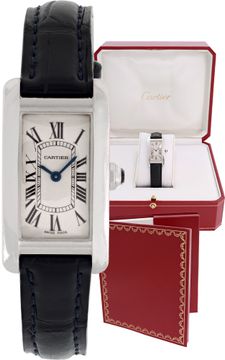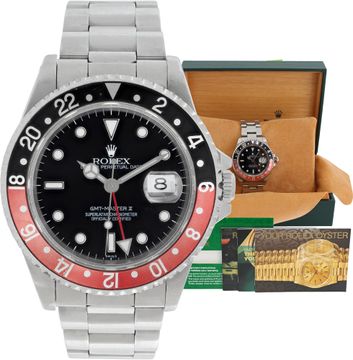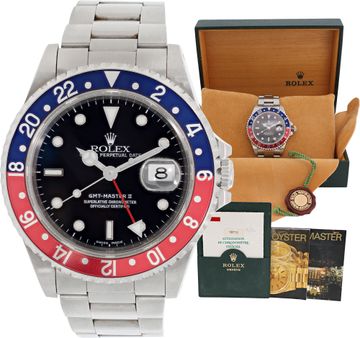How Watch Movements Work: Mechanical vs. Quartz Explained
The heart of any timepiece lies in its movement – the intricate mechanism that powers the watch and keeps time ticking forward. Whether you're a seasoned collector or someone considering their first luxury watch purchase, understanding how watch movements work is essential to making an informed decision. In this comprehensive guide, we'll explore the fascinating world of watch movements, diving deep into the differences between mechanical and quartz systems, their advantages, and what makes each type special.
The Foundation: What Is a Watch Movement?
A watch movement, also known as a caliber, is the engine of a timepiece. It's the complex assembly of components that converts energy into regulated time intervals, moving the hands around the dial to display the current time. Think of it as the beating heart of your watch – without it, your timepiece would be nothing more than an elegant bracelet.
The movement determines not only how your watch keeps time but also its accuracy, maintenance requirements, and overall value. Understanding the different types of movements available helps you appreciate the craftsmanship behind your timepiece and guides you toward the right choice for your lifestyle and preferences.
Mechanical Movements: The Art of Traditional Timekeeping
Mechanical movements represent the pinnacle of traditional watchmaking artistry. These movements operate without batteries, relying instead on a complex system of gears, springs, and levers that work in perfect harmony to keep time. The beauty of mechanical movements lies not just in their functionality but in the centuries-old craftsmanship and engineering excellence they represent. These movements show the true limits by incorporating complications like moon-phases, perpetual calendars, and many more.
How Mechanical Movements Work
At the core of every mechanical movement is the mainspring – a coiled steel spring that stores energy when wound. This energy is gradually released through a series of gears called the gear train, which transfers power to the escapement. The escapement, often considered the heart of the movement, regulates the release of energy in precise intervals, creating the familiar tick-tock sound of a mechanical watch.
The escapement works in conjunction with the balance wheel, which oscillates back and forth at a consistent rate, typically 18,000 to 36,000 times per hour. This oscillation divides time into equal segments, allowing the watch to maintain accurate timekeeping. The regulated energy then moves through additional gears to power the hands on the dial.
Manual Wind vs. Automatic Mechanical Movements
Mechanical movements come in two primary varieties: manual wind and automatic (self-winding).
Manual Wind Movements require the wearer to wind the crown regularly, typically every 24 to 48 hours, to keep the mainspring tensioned. This traditional approach connects the owner directly to their timepiece, creating a daily ritual that many enthusiasts cherish. Manual wind movements often feature thinner profiles, such as a Movado, making them ideal for dress watches and elegant designs.
Automatic Movements feature a rotor – a semi-circular weight that spins freely with the natural motion of the wearer's wrist. This rotor winds the mainspring automatically, eliminating the need for daily winding. Most automatic movements also include a manual winding capability, allowing owners to give their watch a boost when needed.
The Appeal of Mechanical Movements
Mechanical movements captivate watch enthusiasts for several compelling reasons. The craftsmanship involved in creating hundreds of tiny components that work together seamlessly is truly remarkable. Each movement represents hours of skilled labor and engineering precision, making every mechanical watch a miniature masterpiece.
The longevity of mechanical movements is another significant advantage. With proper care and regular servicing, a well-made mechanical watch such as a Frank Muller, can operate for decades or even centuries. This durability, combined with the emotional connection many owners feel to their mechanical timepieces, often makes these watches family heirlooms passed down through generations.
The smooth sweep of the seconds hand in a mechanical watch creates an elegant visual appeal that many find more aesthetically pleasing than the tick-jump motion of quartz watches. Additionally, mechanical movements often feature complications – additional functions like chronographs, moon phases, or perpetual calendars – that showcase the manufacturer's technical expertise.
Quartz Movements: Precision Through Technology

Quartz movements revolutionized the watch industry when they were introduced in the 1970s, offering unprecedented accuracy and reliability at accessible price points. These movements harness the natural properties of quartz crystal to create incredibly precise timekeeping, making them the preferred choice for many practical applications.
How Quartz Movements Work
The operation of a quartz movement centers around a small piece of quartz crystal that vibrates at an extremely consistent frequency when an electrical current is applied. This crystal oscillates at 32,768 times per second – a frequency chosen because it can be easily divided down to exactly one pulse per second through electronic circuits.
A small battery provides the electrical current needed to energize the quartz crystal. The electronic circuit counts these oscillations and sends a pulse to a step motor every second. This motor moves the gear train, which in turn advances the watch hands. The entire process is remarkably efficient, allowing a single battery to power a quartz watch for several years.
The Advantages of Quartz Technology
Quartz movements offer several practical advantages that make them attractive to many watch wearers. Accuracy is perhaps the most significant benefit – a quality quartz watch typically gains or loses only 15-30 seconds per month, compared to several seconds per day for even the finest mechanical movements.
Maintenance requirements for quartz watches are minimal. Beyond periodic battery changes every 2-5 years and occasional cleaning, quartz watches require little attention to maintain their performance. This low-maintenance nature makes them ideal for everyday wear and active lifestyles.
Durability is another strength of quartz movements. With fewer moving parts than mechanical movements, quartz watches are generally more resistant to shock and less affected by position changes. This robustness makes them excellent choices for sports watches and timepieces designed for demanding environments.
Cost-effectiveness allows quartz technology to deliver reliable timekeeping at various price points. While luxury quartz watches certainly exist, the technology enables manufacturers to create accurate, dependable timepieces at accessible prices.
Comparing Mechanical and Quartz: Making the Right Choice
When choosing between mechanical and quartz movements, several factors come into play. Your lifestyle, preferences, and intended use for the watch all influence which type of movement best suits your needs.
Accuracy and Precision
Quartz movements clearly win in terms of raw accuracy. The electronic regulation of quartz crystals provides timekeeping precision that mechanical movements simply cannot match. However, for many watch enthusiasts, the slight variations in mechanical timekeeping add character and remind them of the human craftsmanship involved in creating their timepiece.
Maintenance and Longevity
Mechanical movements require more attention, with complete servicing recommended every 3-5 years to maintain optimal performance. This servicing involves disassembling the movement, cleaning all components, replacing worn parts, and reassembling everything with fresh lubricants. While this represents an ongoing cost, properly maintained mechanical movements can operate for generations.
Quartz movements need minimal maintenance beyond battery replacement. However, when electronic components fail, repairs can sometimes be more challenging and expensive than mechanical repairs, depending on the availability of replacement parts.
Emotional Connection and Heritage
The choice between mechanical and quartz often comes down to emotional factors. Mechanical movements connect wearers to centuries of horological tradition and craftsmanship. The knowledge that your watch operates through purely mechanical means, without relying on electronics, creates a special connection that many find appealing.
Quartz movements, while technologically impressive, may not evoke the same emotional response. However, they offer the satisfaction of owning a highly accurate, reliable timepiece that requires minimal attention while delivering consistent performance.
The Future of Watch Movements
The watch industry continues to evolve, with manufacturers exploring new technologies and refining existing ones. Hybrid movements that combine mechanical and electronic elements are becoming more common, offering the best of both worlds. Some manufacturers are developing mechanical movements with electronic regulation, providing the craftsmanship appeal of mechanical watches with improved accuracy.
Solar-powered quartz movements eliminate the need for battery changes by harnessing light energy to power the watch. Kinetic movements use the motion of the wearer's wrist to generate electricity, combining the convenience of quartz with the satisfaction of self-powered operation.
Smartwatches represent another evolution in timekeeping technology, offering features far beyond traditional time display. While they serve different purposes than traditional watches, they demonstrate the ongoing innovation in personal timekeeping devices.
Choosing Your Perfect Timepiece
Understanding watch movements helps you make an informed decision when selecting your next timepiece. Consider your lifestyle, aesthetic preferences, and how you plan to use the watch. If you appreciate traditional craftsmanship and don't mind regular maintenance, a mechanical movement might be perfect. If you prioritize accuracy and convenience, a quartz movement could be the ideal choice.
Remember that there's no universally "better" movement type – both mechanical and quartz movements excel in different areas and serve different purposes. Many serious watch enthusiasts own both types, appreciating each for its unique characteristics and applications.
Whether you choose the mechanical marvels that connect you to horological tradition or the precise efficiency of quartz technology, understanding how your watch works enhances your appreciation for the timepiece on your wrist. Each tick represents the culmination of human ingenuity and craftsmanship, making every glance at your watch a moment to appreciate the remarkable engineering that makes modern timekeeping possible.
Selling Your Timepieces with Confidence
At Gray and Sons Jewelers, we understand that watch collections evolve over time, and you may find yourself ready to part with certain timepieces to make room for new acquisitions. Whether you own mechanical watches with intricate complications or reliable quartz timepieces, our online buying platform, Sell Us Your Jewelry, provides expert evaluation and fair market pricing for all types of luxury watches. Our knowledgeable specialists understand the nuances of different movement types and can properly assess the value of your timepieces, whether they feature hand-wound mechanical movements, automatic complications, or precision quartz technology. From vintage mechanical chronographs to modern quartz sports watches, Sell Us Your Jewelry offers a seamless, transparent process that ensures you receive competitive offers for your valued timepieces. Discover the convenience of working with movement specialists who appreciate the craftsmanship and technology behind every watch in your collection.
Watch Water Resistance Ratings: What They Really Mean
NEXT ARTICLE
Preserving Timeless Elegance: Essential Summer Care Guide for Your Vintage Rolex Collection in 2025










